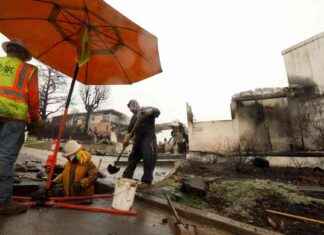Brittney Griner is a familiar face on the Team USA basketball team, but as she prepares for the upcoming Olympics in Paris, she is reflecting on the challenges she has faced since the 2020 Tokyo Games. Griner, a two-time gold medalist, found herself in a Russian prison two years ago after being sentenced to nine years for drug possession and smuggling. The incident involved vape cartridges containing less than a gram of hash oil, which is illegal in Russia. She was eventually released in a high-profile prisoner exchange.
Before participating in the WNBA All-Star Game, Griner expressed how special it is for her to wear the Team USA jersey once again. She mentioned that winning gold would be the icing on the cake for her. This sentiment marks a shift from her previous stance in 2020 when she suggested that the WNBA should not play the national anthem before games. Griner had also knelt during the anthem in solidarity with the “Black Lives Matter” movement. However, her perspective changed after returning home and hearing the anthem at the Olympics.
Griner addressed critics who labeled her as un-American for her anthem protests, highlighting her family’s history of service to the country. She defended her right to protest as an American citizen. As she prepares to represent Team USA in Paris, Griner feels supported and secure with her team. Despite the challenges of being away from her family, including her newborn son, Bash, Griner is excited about the opportunity to compete on the international stage once again.
Team USA’s head coach, Cheryl Reeve, praised Griner for her resilience and determination, acknowledging the personal struggles she has overcome. The team is gearing up for their first game against Japan in the upcoming Olympics, aiming for another gold medal. Griner’s journey serves as a testament to her strength and commitment to the game she loves.
As Griner embarks on this new chapter in her career, her story is a reminder of the resilience and perseverance required to succeed at the highest level of sports. Her experiences both on and off the court have shaped her into the player and person she is today. As fans cheer on Team USA in the Olympics, Griner’s journey is sure to inspire and captivate audiences around the world.






















